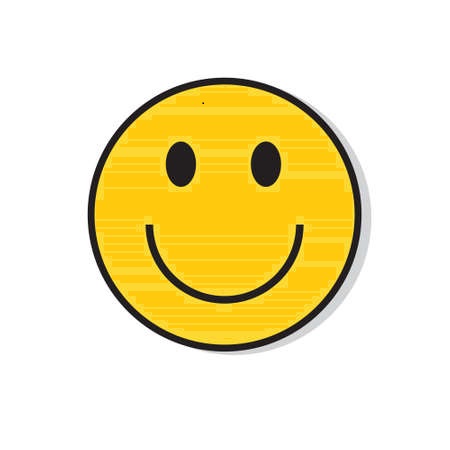Tips and tricks to learn and practice
This page is not integrated into the navigation, but can always be reached via the page - remember all.
Our brain is better than any computer, not as fast, but smarter. You just don't know it yet, but if you use my techniques, you will notice it. I promise it works!
But very important!! You have to do it too! And don't just read!
But first an explanation! Remembering and notice are two different things. The following trick helps me to find my glasses again, I say goodbye to my glasses.
We talked about pictures, the crazier and more unusual a picture is, the easier it is to remember it.
What our brain is particularly good at remembering are images.
If you doubt it, give it a try. My tip: Cut out 100 pictures from a magazine. Take 50 of them and watch each one for just 2-3 seconds.
Then you shuffle them all 100 and then look through all 100, you should write down or mark the picture that you have already seen before.
If you can get like 40 of them, then it's ok and you'll see, that's proof of how well you can memorize pictures. Most manage more than 45.
It is important to be in a good mood while studying.
Try to smile continuously for 1 minute, the brain doesn't care if the smile is real,
or you just grin But your mood will definitely improve!
If you don't believe it, just try it and you'll find out! 1 minute of music below.

The more interested we are in the subject matter, the faster we learn!
Here are some examples of images.
For example, if we want to remember the word train as the 1st word, then an unusual picture of a train driving through a huge hollow tree trunk would be better than the train is made of wood.
Or as 2nd word crown, then I see a lamp that looks like a crown, it also blinks because of the imitation jewels.
I had trouble even at first trying to remember the order of a deck of cards. But then I found which combination caused problems and then changed it accordingly. E.g. Alps and Fir. The fact that there are fir trees in the Alps is nothing special, the brain quickly forgets that. But someone wanted to cut down a large area with fir trees, which led to a huge demonstration.
That fitted better then. Or someone has hung a pair of old shoes on the Victory Column, already really rotten! This gets better and better over time as we practice!
To practice the whole thing, take a newspaper or magazine and cross out 20 words in it to practice. Assuming you know the tree list.
Of course, if you know the whole list of hundreds from my course, you have more options.
I made an Excel spreadsheet with the most common 650 words and let 20 words be output at random, which works wonderfully.
Here you can practice words, right here more, an excerpt from my Excel list
There is also the possibility to memorize the order of playing cards. If it is a full deck, with 52 cards, then A is Alps and a - Ants, and B is Mine and b - Ballons. etc. always large and small in alternation.
So I have a list of 52 terms depending on the first letter, e.g. A - Alps and B - mine. C - Checkpoint Charlie and c - Charlie Chaplin, D - Dom and d - Can etc. so a list with the upper and lower case letters. With the small e we already have ten points.
Since the alphabet has 26 letters, this fits right in with the 52 cards
The playing cards also each have a picture, whereby clubs, is something from the theme of tools or religious is also possible, for spades I chose nature, for hearts everything with people and diamonds everything from the circus.
e.g. Karo As is a circus tent, if this is the first card I see the circus tent in the Alps, what a hassle to get that there. 8 of spades a snowman, if that's the second card it's full of ants. If the king of hearts is the third card,
then a king visits a mine and the fourth card ace of spades(fir tree) then a balloon got caught in a fir tree. A little boy cries because of it.
So always alternating capital letters and small letters.
If you can do both lists, it's a nice exercise on the go. Of course you can also fill the list of hundreds with the cards, then you don't need the big/small list A to Z!
Another technique called the 'Method of Loci' was used by the ancient Greeks and Romans.
In the simplest case, for example, you remember things in a room and put the memory terms on them. e.g. when I leave the house, the front door reminds me of what I have to take with me because I projected it onto it.
On the subject of putting things in a room, there's something to learn from the last 12 American Presidents from Eisenhower onwards. see remember all page Bookmark.
Even if you go for a walk, you can think of a wonderful route.
The way to work or to go shopping is also good. However, the individual route points must not be too far apart.
If you have problems with unusual pictures and have children, you can ask them, they usually have more imagination.
If you want to store things more effectively, you can link two terms together, such as street and wall! I'm driving along a street, suddenly there's a wall in my way. If you now see this in front of you and link it to point two, for example, a light switch or lamp, one can think: 'It's a good thing that at least the lighting was on' and thus put 2 terms on one picture. The experts put even more on a mailbox. I also use this multiple technique in my course, remember for very long numbers, such as the decimal places of the number Pi to more than 100 digits!
You see, you don't get a good memory just like that, you have to acquire it through practice, but if you know the technique, it's like reading, if you know the alphabet, you will eventually read better and faster be able.
Now practice hard. If you want to know how to proceed, just email me. Or via contact form.
And don't forget, you don't need to know what you haven't repeated five times.
So repeat and again after 1/4 hour, one day, three days, seven days and after one month. Maybe again after three months.
You can remember things about a story, but you have to make them up first. An example of this is the long number, more examples are coming soon!
The countries of South America over a history, or the first 15 EU countries in order of accession. All of this can then be accessed via the Learn all page!
However, a story is more suitable for some, others forget it more quickly. You have to find out what your preferences are.
However, a story is more suitable for some, others forget it more quickly. You have to find out what your preferences are.
Above all, you make fewer mistakes this way, as many students have already confirmed to me, because you can find everything better with the header images. Especially if you repeated it!
But playing around with devices like smartphones is often more fun for people than nurturing their own mind. And the more we rely on the machine, the more the mind gets out of practice.
But if we first have to google every argument that we need, that's of course not as great as having it directly at hand.
With my memorization technique, however, you can remember anything you want. I also show this with examples such as remembering shapes, or a sequence of colors, or zeros and ones.
So very abstract things.
What you absolutely need is to know the hundreds list and a syllable list, e.g. un is uncle for me, sub is submarine for me, etc. and to have a list of names, at least for first names. Like Oliver is Olive, Ben is a bell because of Big Ben etc.
You don't get it for free, but you have to want it and practice it, if you want a better memory!
If you liked this and want to order my course Then click here
back up

